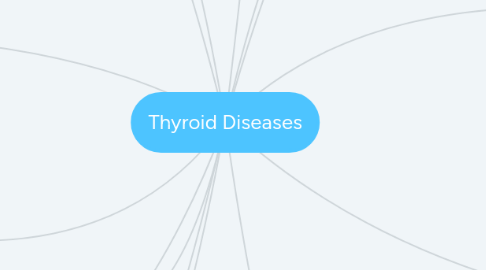
1. Reduced number/sensitivity of B-Adrenergic receptors
2. Lower heart rate, decreased stroke volume, decreased diastolic volume, increased peripheral resistance
2.1. Associated with lower exercise and energy early in disease
3. Reduced catecholamine action, reduced metabolism
4. Hypothyroidism
5. Pathogenesis
5.1. Congenital
5.1.1. Aplasia of Thyroid
5.1.2. Defect in hormone biosynthesis
5.1.3. 1/4000 births
5.1.4. Girls affected twice as often
5.1.5. 15% hereditary
5.1.6. Caused by mutations in transcription factors
5.2. Autoimmune disease
5.2.1. Hashimoto Thyroiditis
5.3. Diminished hormone synthesis
5.3.1. Iodine Deficiency
5.3.2. Drug effects
5.4. Deficient TSH/TRH secretion
6. Opposite Effects From Each Disease
7. Symptoms
7.1. Increased serum TSH, lower hormone uptake, lower radioiodine uptake
7.2. Lower metabolic rate
7.3. Reduction of thyroid size/weight
7.4. Slow thinking, lethargy
7.5. Dry skin
7.6. Lower appetite, weight gain, constipation
7.7. Slow speech
7.8. Swollen face
8. Cardiovascular Alterations
8.1. Bradycardia, cardiomyopathy
8.2. Thickening of intraventricular septum, decreased wall motion
8.2.1. Due to deposition of mucopolysaccharides, fiber degredation, cardiac enlargement
8.2.2. Common in elderly patients, late stage of disease
8.3. Heart failure
9. Gastrointestinal Alterations
9.1. Lower metabolic rate
9.1.1. Weight gain
9.1.2. Low appetite
9.2. High cholesterol
9.2.1. Reduced number of LDL receptors
9.3. Constipation
9.4. Achlorhydria associated with Pernicious Anemia
9.4.1. Reduced GI motility
9.4.2. Ascitic fluid with high protein buildup
10. Hyperthyroidism
11. Pathogenesis
11.1. Graves Disease
11.1.1. Typical in 30s/40s
11.1.2. Thyroid Symmetrically Enlarged
11.1.3. Thyroid doubles or triples in weight
11.2. Multinodular Goiter
11.3. Pituitary Adenoma
12. Symptoms
12.1. Alertness, nervousness, irritability
12.2. Loss of concentration
12.3. Weakness in muscles, upper body
12.4. Heart palpitations
12.5. Increased appetite, weight loss
12.6. Heat intolerance
12.7. Rapid Speech
12.8. Tremors
13. Cardiovascular Alterations
13.1. Increased sensitivity/number of B-Adrenergic Receptors
13.2. Amplified Catecholamine action, increase in metabolism
13.3. Increased metabolic rate, weight loss
13.3.1. Common in elderly patients or those with already reduced appetite
13.4. Palpitations, tachycardia, arrhythmia
13.5. Increased heart rate
13.6. Reduced peripheral vascular resistance
13.7. Atrial fibrillation
13.7.1. Common in elderly patients
14. Gastrointestinal Alterations
14.1. Increased metabolism and weight loss
14.1.1. Common in elderly, reduced appetite
14.2. Increased Hepatic Gluconeogenesis
14.3. Increased Carbohydrate Absorption
14.3.1. Rapid changes in blood sugar after eating
14.4. Increased Insulin Degredation
14.4.1. Rapid changes in blood sugar after eating
14.5. Increased Insulin Secretion
14.5.1. Compensates for degradation, maintains normal function
14.5.2. Diabetic patients require additional insulin doses
14.6. Low cholesterol
14.6.1. Increase in number of LDL receptors
14.7. Increased frequency of bowel movements
14.7.1. Increased GI motility
